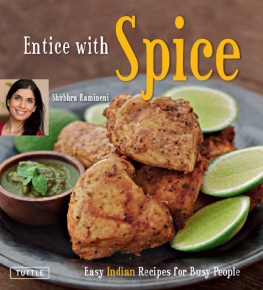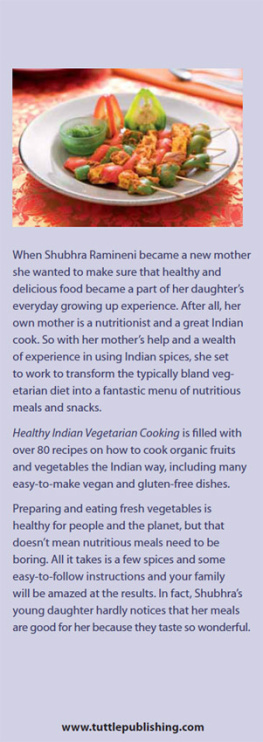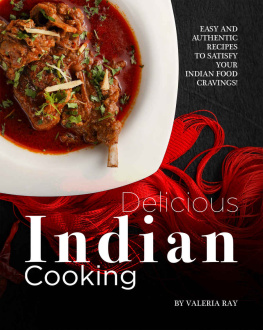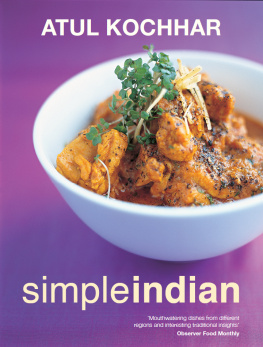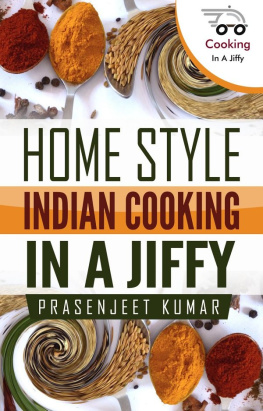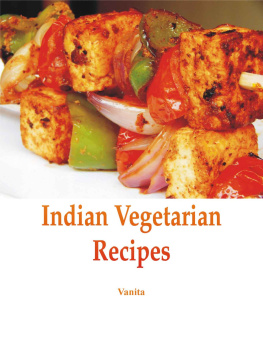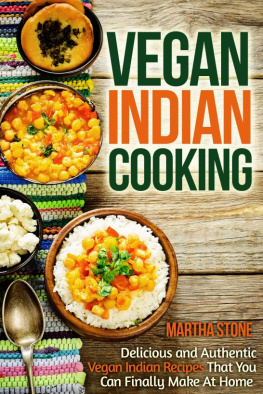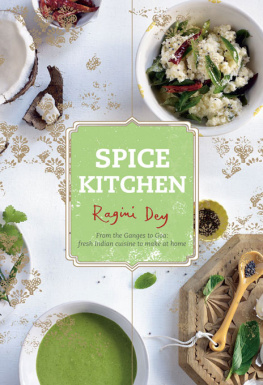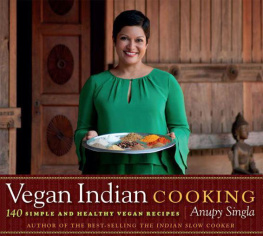To my dear, dear husband, Naveen. From the beginning, he encouraged me to develop and write this cookbook, and he supported me through the entire process of creating it. I vividly remember when he brought home a slice of cake to celebrate the day I found out I had a book deal. He was there when recipes needed to be retestedtrying out the food and all the while helping to keep the kitchen clean by washing the never-ending pile of dishes. I hope he still likes Indian food despite being overloaded with it for more than a year of recipe testing!
Acknowledgments
I would like to thank my mother, Neelam Verma. This book definitely would not have been possible without her help and contributions. She spent many a day and night tirelessly helping me cook and test the recipes. She always cooks by sight, feel and taste rather than with exact measuring tools, so it was tricky and frustrating at times for us to standardize the recipes. However, she patiently answered every question, and we did it! She also offered and provided much advice and guidance on different aspects of Indian cuisine and as it relates to the culture. I would also like to thank her for providing me with nutritional guidance throughout my life and for teaching me a healthy eating lifestyle.
I am also grateful for the contribution my mother-in-law, Rajani Ramineni, made to the book. She taught me how to cook dishes from a different Indian regional cuisine and helped me develop and test those recipes. Whenever my in-laws came to visit us this past year from out of town, I would put her to work and she and I would work on those recipes during her entire short stay. On her last visit, after a long day of standing, cooking and cleaning, she joked that she was not going to come visit anymore! She was always willing to help and I thank her for that and her patience.
Also thanks to D.G.K. Varma for his input and culinary expertise and to Sonia Yadav for sharing her wealth of knowledge on Indian cuisine.
The following businesses deserve a word of thanks: Black Diamond Builders (Bonner S. Ball and Thomas H. Zenner), for providing the photo shoot location; and Sur la Table, for providing the kitchenware for the photo shoot.
Finally, I would like to thank my editors, Holly Jennings and June Chong, and my designer, Chan Sow Yun, for working with me through the different stages of the development of this book. Their advice and suggestions were always helpful and supportive.

Chapter 1
Appetizers, Snacks and Light Meals
In a traditional everyday home-style Indian meal,a preliminary serving of a small portion of foodor what we would call an appetizertypically does not exist. Yet, when people have a dinner party, an appetizer might be offered, as I often serve small bites when entertaining. I do not serve appetizers at the dining table, but instead, as I learned from my mother, I serve them as guests arrive and chat in the living room, along with a beverage either wine, beer, cocktails, juice or water.
Pakora, which are Vegetable Fritters (page 61) and samosa, which are Potato Turnovers (page 50) are typically sold by street vendors and enjoyed as satisfying afternoon snacks in India, but they also make great appetizers. Most snack shops in India also sell these snacks, so it is not too common to make them at home. Even here in the United States, I usually buy samosa from the Indian snack shop, but sometimes I do enjoy making them myself, especially with my moms shortcut technique of using Mexican white flour tortillas!
When entertaining, I particularly enjoy serving Cheese and Bell Pepper Skewers (page 49) and Chicken Kebabs (page 6o) as appetizers. Both are easy to prepare and they make a beautiful presentation when skewered on small picks. I also like to serve my mothers Spiced Fruit Cocktail (page 54), which is a medley of different chopped fruits that are spiced and seasoned with ground red pepper (cayenne), salt and ground black pepper and tossed with lime juice.
Pappadums are lentil wafers that are eaten along with the meal to add crunch and flavor. Interestingly, I have noticed that some Indian restaurants in America serve pappadums as appetizers, or place them at the table to munch on before the main course arrives. You can serve them either way.
In the southern states of India, dosa, which are Crispy Rice and Lentil Crepes (page 56) and uttapam, which are Savory Vegetable Pancakes (page 53) are delicious breakfast and brunch options, and they can also be eaten as a light meal. They are made from the same fermented batter, so when you have the batter ready, you can divide it and make dosa one day and uttapam the next!
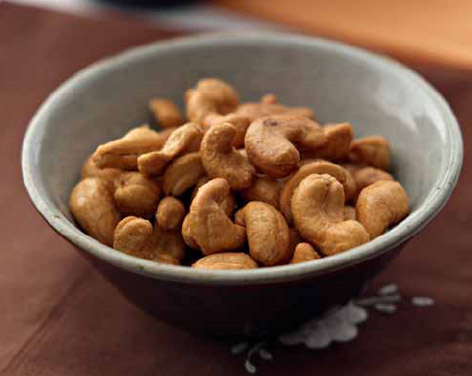
Salted Fried Cashews Namkeen Kaju
Fried and salted cashews are an addictive afternoon snack that goes great with a cup ofIndian Tea (page 148). They taste great warm right after they are freshly fried, or you can put them in an airtight container to enjoy anytime. These cashews are also excellent to serve as appetizers along with cocktails. When you have a party, fill a beautiful serving dish with these cashews, and watch how quickly they disappear!
Makes 1 lb (500 g)
Cook time: 5 minutes
Refrigerator life: Store up to 1 month in an airtight container at room temperature
Reheating method: None! Simply toss and serve
Vegetable oil, for deep-frying
1 lb (500 g) plain whole cashews
2 teaspoons salt
Pour 2 inches (5 cm) of oil into a medium wok or deep stockpot and place over medium-high heat.
Test the oil to make sure it is hot by dropping 1 cashew in the wok. If the oil is bubbling around the cashew, the oil is hot and ready. If not, let the oil heat longer. If the cashew turns dark brown immediately, the oil is overheated, so reduce the heat a bit.
When the oil is hot, reduce the heat to medium so the cashews do not burn while they are cooking. Using a large spoon, carefully slide the cashews in batches into the wok, depending on the size of your wok. Cook until the cashews are light golden, turning frequently, about 30 to 45 seconds.
Remove the cashews from the wok with a slotted spoon and place them in a wide bowl lined with paper towels. Immediately sprinkle the salt on the hot cashews and toss well.
Allow to cool slightly before serving. Enjoy now or let cool completely and store in a sealed jar at room temperature for later!
TIP: For 1 lb of cashews, I fry them in 5 batches. Keep a very sharp eye on the first batch, as it may take less time since the oil will be very hot.
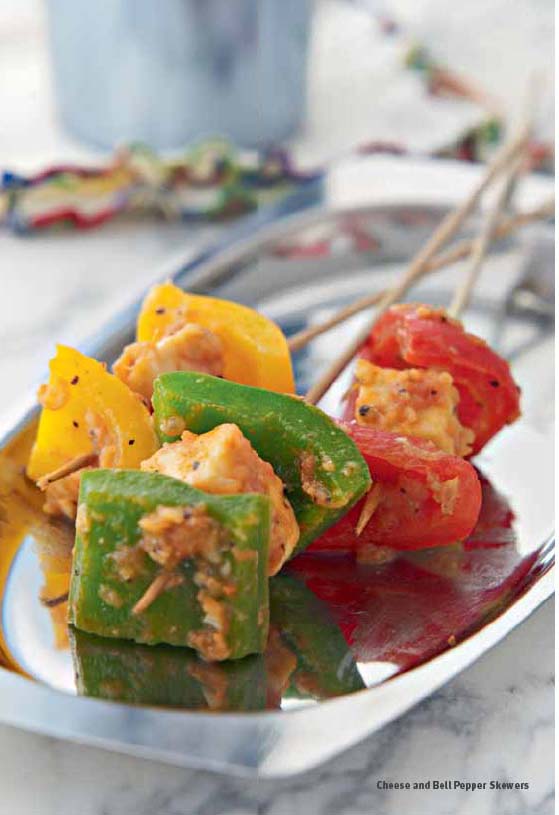
Cheese and Bell Pepper Skewers Paneer Tikka
These delicious kebabs are a colorful Indian appetizer that is often served at Indian wedding receptions, but you certainly do not have to wait for a wedding to enjoy them! Tikka usually refers to bite-size pieces of boneless meat, but small pieces of paneer (Indian cheese) are also called tikka. When entertaining, I like to place the paneer and bell peppers on decorative mini skewers with a pretty ribbon on the end. Just be sure to make plenty of kebabs, as people tend to grab and enjoy them fast!
Next page
